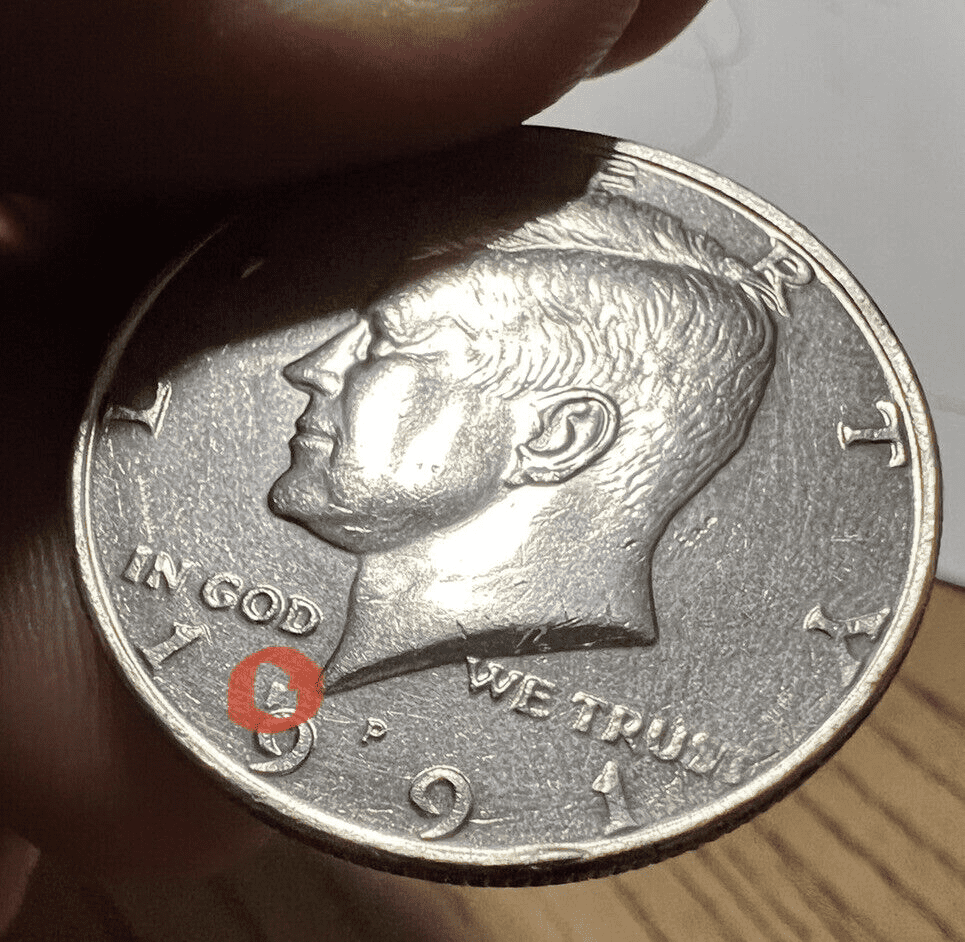What Is the 1991 Kennedy Half Dollar Made Of?
On November 22, 1963, President John F. Kennedy was slain in Dallas, Texas, which prompted Congress to swiftly approve the redesign of the half dollar in honour of the country’s memories.
The first Kennedy half dollar was released in early 1964 to replace the Franklin half dollar, which had only been in use for 16 years from 1948.
The Kennedy half dollar’s obverse and reverse designs, created by Gilroy Roberts and Frank Gasparro, were an immediate hit. Millions of grieving Americans seized the opportunity to purchase a “memorial” of Kennedy for 50 cents. Due to the widespread perception that the Kennedy half dollar is intrinsically more valuable or deserving of preservation than the other half coins, the half dollar was immediately taken out of circulation. The half dollar has all but gone from daily transactions by the early 1980s, even though it was still part of the array of business-strike circulation currency up until 2002.
A composition of 75% copper and 25% nickel, the same as that used for dimes and quarters, was chosen for the Kennedy Half Dollar as of 1970, and all silver content was eliminated. The 1991 Kennedy Half Dollar, which has a diameter of 30.6mm, a weight of 11.34g, and a reeded edge, is devoid of precious metal as a result.
The Cold War, which had started in 1947, ended in 1991. Following the fall of the Soviet Union, Iraq was attacked by a coalition force of 34 nations authorised by the UN; this conflict later became known as the Gulf War. The Yugoslav Wars also started in this year. The first website, “info.cern.ch,” was launched in 1991, and Nirvana released their legendary “Nevermind” album. 1991 also marked the beginning of the end of Apartheid.
1991 Kennedy Half Dollar Varieties
1991 P Kennedy Half Dollar
Year: 1991
Face Value: $0.50
Composition: 75% silver and 25% copper
Mass: 11.34 grams
Diameter: 30.6 millimeters
Thickness: 2.15 millimeters
Edge: 150 Reeds
Minted in: Philadelphia
Mint Quantity: 14,874,000

1991 D Kennedy Half Dollar
Year: 1991
Face Value: $0.50
Composition: 75% silver and 25% copper
Mass: 11.34 grams
Diameter: 30.6 millimeters
Thickness: 2.15 millimeters
Edge: 150 Reeds
Minted in: Philadelphia
Mint Quantity: 15,054,678

1991 S Kennedy Half Dollar Proof
Year: 1991
Face Value: $0.50
Composition: 75% silver and 25% copper
Mass: 11.34 grams
Diameter: 30.6 millimeters
Thickness: 2.15 millimeters
Edge: 150 Reeds
Minted in: Philadelphia
Mint Quantity: 2,867,787

List Of 1991 Kennedy Half Dollar Errors

There aren’t any widely reported or sought after 1991 Kennedy half dollar errors, and there seems to be a scarcity of significant error found in this years run of coins. A few errors can be caught by a keen eye, however, like the coin pictured above with a mint error.
How Much Is the 1991 Kennedy Half Dollar Worth Today?
The melt value of the Kennedy Half Dollar from 1991 is only $0.1142191 as of January 2023.
The graph below illustrates the coin’s relatively low overall monetary value:
| Coin | Grade | Value |
| 1991 P Kennedy Half Dollar | MS63 | $2.28 |
| 1991 D Kennedy Half Dollar | MS63 | $3.30 |
| 1991 S Kennedy Half Dollar Proof | PR65 | $11 |
How Does The Grading System Work?
The Sheldon Scale is used by numismatists to provide a numerical value to coins. The Sheldon Scale goes from poor (P-1) to perfect mint state (P-1) (MS-70). Coins were originally evaluated using words to reflect their condition (Good, Fair, Excellent, Etc.). Unfortunately, coin collectors and dealers had different ideas about what each of these terms represent.
Professional numismatists joined together in the 1970s and established coin grading standards. These numismatists now assign grades at key places on the seventy-point scale, using the most regularly utilized numeric points in conjunction with the original adjective grade. The following are the most common coin grades:
- (P-1) Poor – Indistinguishable and probably damaged; if used, must have a date and mintmark; otherwise, rather battered.
- (FR-2) Fair – Nearly smooth, but without the damage that a coin graded Poor often possesses. The coin must have enough detail to be identified.
- (G-4) Fair – Inscriptions have merged into the rims in some areas, and important elements have been mostly erased.
- (VG-8) Very Good- A little weathered, but all of the primary design elements are visible, albeit faintly. There is little if any, central detail left.
- (F-12) Good – The item is very worn, yet the wear is even, and the overall design details stand out clearly. Rims are almost completely isolated from the field.
- (VF-20) Very Fine – Moderately weathered, with some finer features still visible. The motto or all letters of LIBERTY are readable. Both sides of the coin have entire rims that are separated from the field.
- (EF-40) Extremely Fine – Gently used; all gadgets are visible, and the most important ones are bold. The finer details are bold and clear, however, light wear may be seen.
- (AU-50) Uncirculated – Slight evidence of wear on the coin’s design’s high points; may have contact marks; eye appeal should be adequate.
- (AU-58) Uncirculated Choice – Slight traces of wear, no severe contact marks, almost full mint shine, and great eye appeal.
- (MS-60) Mint State Basal – Strictly uncirculated; no indication of wear on the coin’s highest points, but an unsightly coin with reduced luster, visible contact marks, hairlines, and other flaws.
- (MS-63) Mint State Acceptable – Uncirculated, but with contact scratches and nicks, little reduced shine, but otherwise appealing appearance. The strike is weak to average.
- (MS-65) Mint State Choice – Uncirculated with great mint shine, very little contact blemishes, and exceptional eye appeal. The strike is unusually severe.
- (MS-68) Mint State Premium Quality – Uncirculated with superb luster, no obvious contact marks to the naked eye, and exceptional eye appeal. The strike is quick and appealing.
- (MS-69) Almost Perfect Mint State – Uncirculated with perfect brilliance, a sharp and appealing strike, and extremely good eye appeal. A near-perfect coin with minor imperfections in the planchet, strike, and contact markings (seen only under 8x magnification).
- (MS-70) Mint State Perfect – Under 8x magnification, there are no tiny imperfections discernible; the strike is crisp, and the coin is perfectly centered on a beautiful planchet. Rarely seen on a coin, this coin is bright and whole, with original luster and exceptional eye appeal.
Where To Buy Or Sell 1991 Kennedy Half Dollar?
As previously said, there aren’t many highly prized 1990 Kennedy Half Dollars, therefore only the ones with the most glaring mistakes are worth more than a few dollars. You might even find this coin in your pocket change because of its relatively recent (in terms of coinage history) issue, and these coins are frequent fare at flea markets. These coins can be purchased reasonably online at sites like Great Collections and Golden Eagle Coins.
FAQs
What is a 1991 D Kennedy half dollar worth?
1991 Kennedy Half Dollars have a melt value of just $0.1142191. Even the top condition proof examples are only worth around $11.
Does a 1991 half dollar have silver in it?
There’s no silver content found in 1991 Kennedy half dollars having been removed over 20 years before in 1970.
What is a 1991 half dollar made of?
1991 Half Dollars are made of 75% copper and a 25% nickel cladding.
